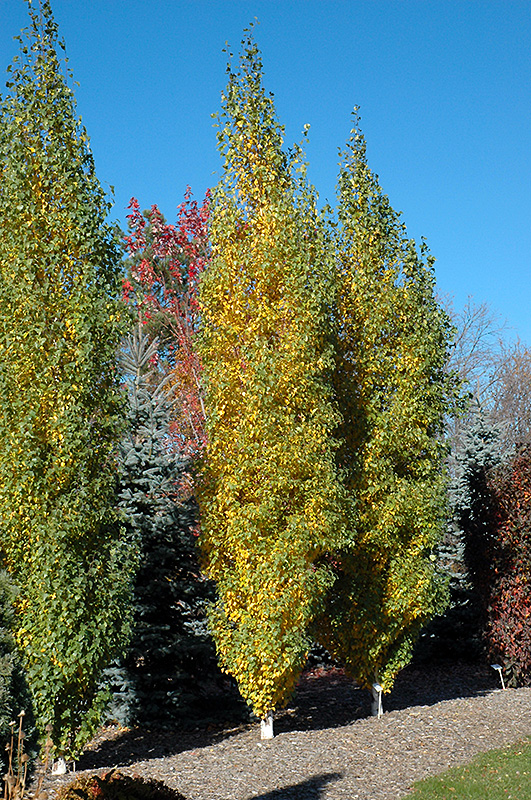Plant Library
Parkland Pillar Japanese White Birch
Betula platyphylla 'Jefpark'
Height: 30 feet
Spread: 6 feet
Sunlight:
![]()
![]()
Hardiness Zone: 3
Other Names: Asian White Birch
Description:
An attractive variety, selected for its dense, columnar form; tightly branched, deep green foliage turns golden in fall; smooth, pure white bark for winter interest; great for skyline articulation or screening
Ornamental Features
Parkland Pillar Japanese White Birch is primarily valued in the landscape for its rigidly columnar form. It has dark green deciduous foliage. The serrated pointy leaves turn an outstanding gold in the fall. The smooth white bark is extremely showy and adds significant winter interest.
Landscape Attributes
Parkland Pillar Japanese White Birch is a dense deciduous tree with a strong central leader and a narrowly upright and columnar growth habit. Its relatively fine texture sets it apart from other landscape plants with less refined foliage.
This is a relatively low maintenance tree, and should only be pruned in summer after the leaves have fully developed, as it may 'bleed' sap if pruned in late winter or early spring. Deer don't particularly care for this plant and will usually leave it alone in favor of tastier treats. It has no significant negative characteristics.
Parkland Pillar Japanese White Birch is recommended for the following landscape applications;
- Accent
- Vertical Accent
- Hedges/Screening
Planting & Growing
Parkland Pillar Japanese White Birch will grow to be about 30 feet tall at maturity, with a spread of 6 feet. It has a low canopy with a typical clearance of 2 feet from the ground, and should not be planted underneath power lines. It grows at a fast rate, and under ideal conditions can be expected to live for 40 years or more.
This tree does best in full sun to partial shade. It prefers to grow in average to moist conditions, and shouldn't be allowed to dry out. It is not particular as to soil type or pH. It is highly tolerant of urban pollution and will even thrive in inner city environments. Consider applying a thick mulch around the root zone in winter to protect it in exposed locations or colder microclimates. This is a selected variety of a species not originally from North America.
Disclaimer - This Plant Finder tool is an online resource representing many of the varieties that we carry over the course of the season, and is intended for informational purposes only. Inventory varies seasonally, so we cannot guarantee that every plant will be in stock at all times - please contact the store directly for availability. It does not include our entire inventory of plants, so be sure to visit our store to see varieties that may not be represented on this list.




